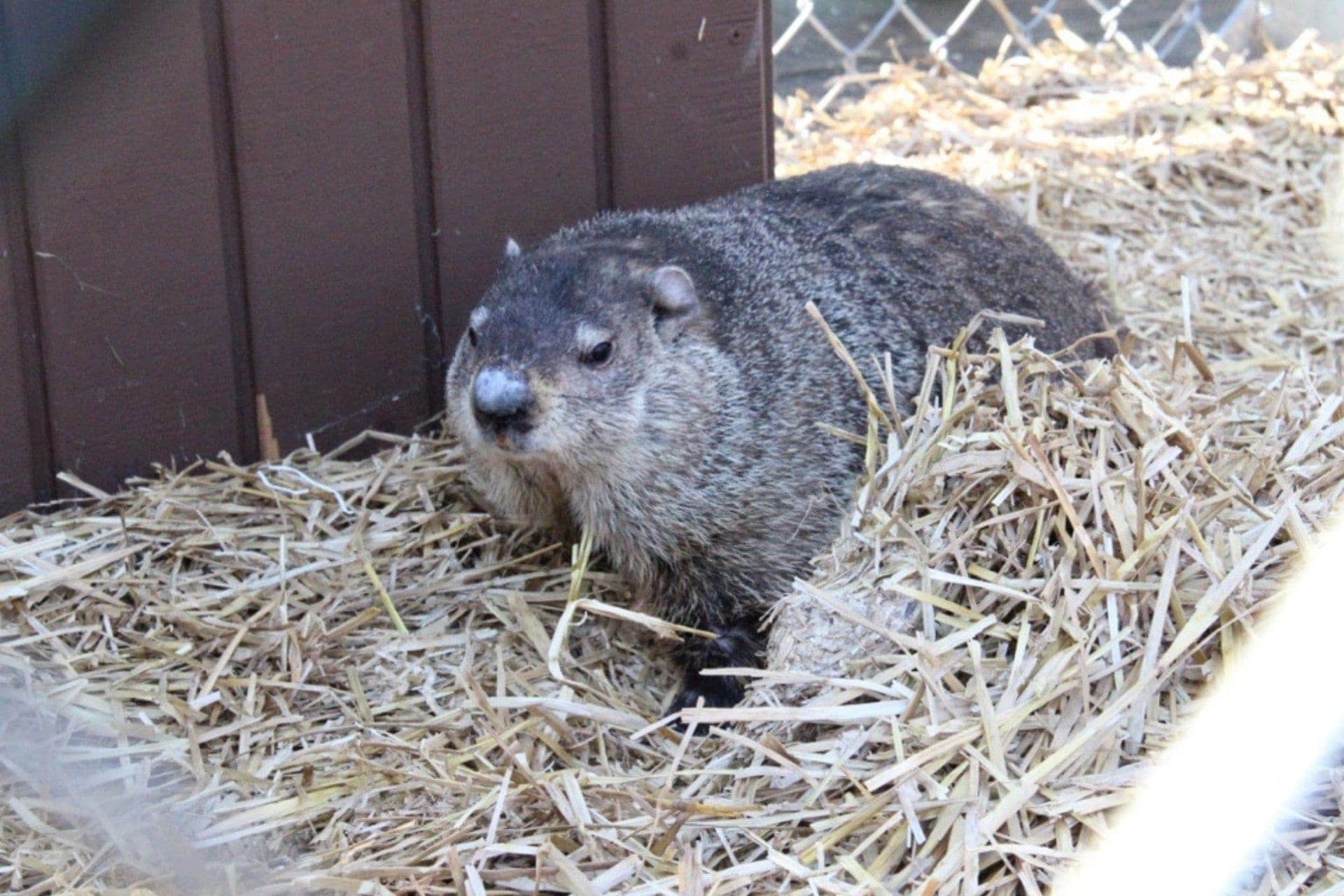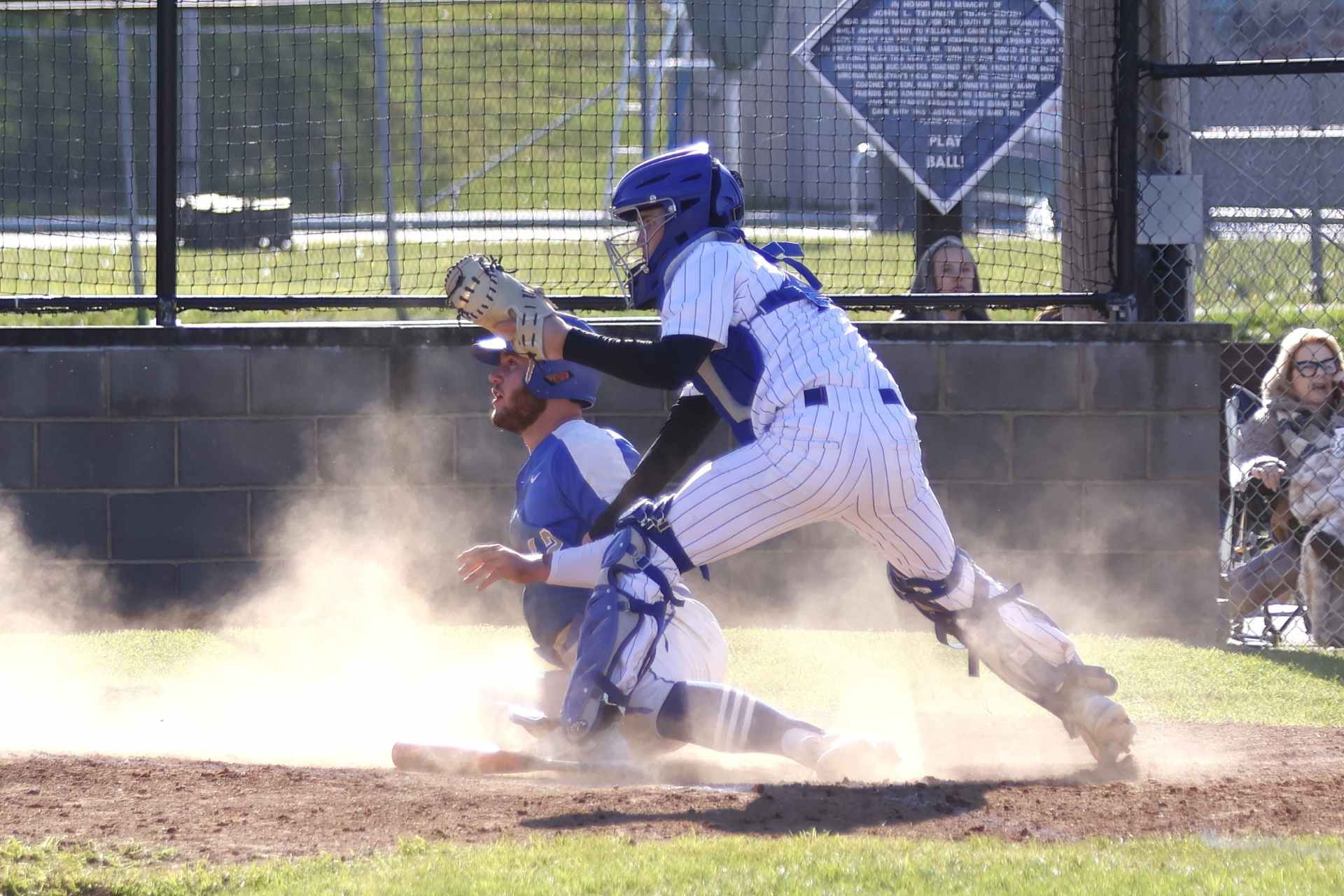Editor’s note: The following story is the first in a series of monthly features about one animal housed at the West Virginia Wildlife Center. For February, we have chosen to focus on the Wildlife Center’s famous – and sometimes infamous – weather-prognosticating groundhogs.
FRENCH CREEK– Spring is approaching, and soon the Upshur County community will see if meteorology is one of the many talents possessed by groundhogs.
Trevor Moore, wildlife biologist with the West Virginia Wildlife Center, said early settlers started to encounter groundhogs when they began homesteading because humans and groundhogs prefer similar environments.
“They like the edge of the woods and those nice flat pastures, where the soil drains really well, but that also happens to be really good place for agriculture,” Moore said. “That’s when people first started interacting with them – when they were trying to build up their homesteads.”
Unfortunately, this first encounter is what established groundhogs’ reputations as pests.
“Groundhogs have these extensive burrows; they move almost 400 pounds of dirt out of these burrows, which can weaken the soil, especially if you have a lot of heavy cattle on top of it and cattle can step into it and break their legs or farmers can break their equipment,” Moore said.
Currently, humans have inadvertently created areas that benefit groundhogs and encourage them to stay.
“Humans like to have these pristine nature trails and then when you have a lot of human interaction, we tend to drive out a lot of bigger predators of the groundhogs too, so foxes, coyotes, eagles, badgers – animals of this nature,” Moore said. “It’s been really beneficial for the groundhogs because now they have nice, loose soil from cutting down a lot of the old-growth trees and they prefer the younger trees they can burrow underneath, so it’s basically creating an excellent habitat for them, free of predators.”
Most of their natural predators tend to go after them when they emerge from their burrows to find food.
“Once they’re in their burrow, they’re in their element,” Moore explained. “They have really sharp claws to move a lot of dirt and they have very big, ever-growing incisor teeth that are very sharp because they have to be able to chew through roots and wood to make these big burrow systems.”
Towards the end of June or July, groundhogs will start eating less, as their metabolisms slow in preparation for hibernation.
“They start putting on a ton of fat, and that’s how they survive through the hibernation,” he explained. “They’re not like other squirrels and chipmunks that can store things and make little caches in their dens. They actually just put on fat and live off their fat for hibernation.”
Moore said groundhogs play an important role for other animals by creating their elaborate homes.
“They’re hugely important for other animals that people may think are a little bit more charismatic like foxes and coyotes, which end up using those burrows as their own dens,” Moore said. “Why dig your own house when you have someone else who can do it a lot better? And if the groundhog is still there, they could get a meal and a house.”
Digging their burrows also benefits the forest and itself.
“All that soil turnover is excellent for soil health, and they do poop right in their den, so plants get some nitrogen they need from the ground directly,” Moore said. “Soil turnover and the aeration of the soil is always a huge thing for trees and other vegetation that needs new root growth. You don’t want hard compact soil all the time, you need some soil opened up and loosened so you can get nutrients better to the roots.”
Groundhogs have also been used by scientists to study hepatitis.
“They get a woodchuck hepatitis virus that progresses very similarly in them as humans with Hepatitis B, but people cannot get hepatitis from the woodchuck hepatitis virus, so it’s just a very good animal to study the progression of the virus,” Moore said. “It’s called a ‘model animal’ or an animal study and another animal that gets hepatitis, very similar to humans, are chimpanzees, but since they’re endangered, the ethical and medical regulations on testing hepatitis on chimpanzees is much more stringent than it would be for woodchucks.”
Scientists have also studied groundhogs to understand their metabolic functions and how they store their fat reserves for winter.
“Their heart rate goes extremely low,” Moore said. “It goes down into the single digits to low double digits, like six to 10 heartbeats per minute, and then breathing once every couple minutes. This has been a huge interest of the medical community, especially when we put people under for complicated surgical procedures.”
The most well-known groundhog in the area is French Creek Freddie, who also acts as a meteorologist every February for Groundhog Day. This year, he called for six more weeks of winter, but time will only tell if this is accurate.




















